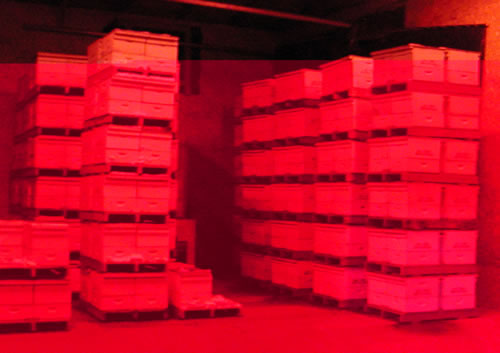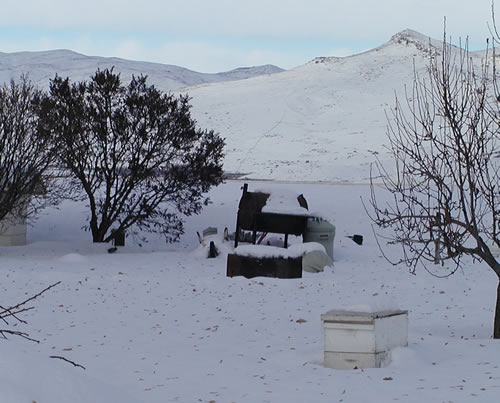

|
This is the inside storage building where the bees spend the winter and it looks eerie because of the red light which the bees don't see. For the two or so months they spend in the storage, the environment is kept totally dark (except for occasional use of the red light) and maintained at a nominal temperature of 40° F. Bees, like humans, create carbon dioxide and a lethal dose for them is just slightly more than normally found in the atmosphere; so the storage air environment must be constantly changed by special ventilation equipment to preclude a build up of carbon dioxide. Since the bees create heat, there is normally no need to heat the insulated facility and the greater concern is from it getting too warm. The bees survive the cold winter months, either indoors or outside, by clustering into a tight ball inside the hive on the beeswax comb containing their food source (honey). The consumed honey (a carbohydrate) produces heat and the cluster moves continuously - the inside bees moving out and visa versa. In this manner, none of the bees are on the outside of the cluster long enough to freeze and parish. The colder it is, the tighter the cluster - and at 40°, it's fairly loose. |

| Sorry about that - this little guy by the house never made it to the storage, but bees can survive outside as well, provided they have enough food stores. |